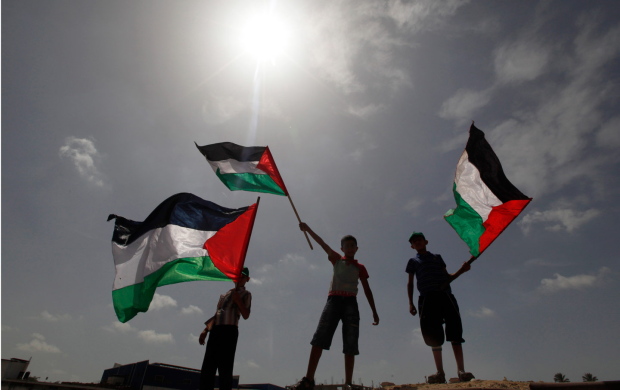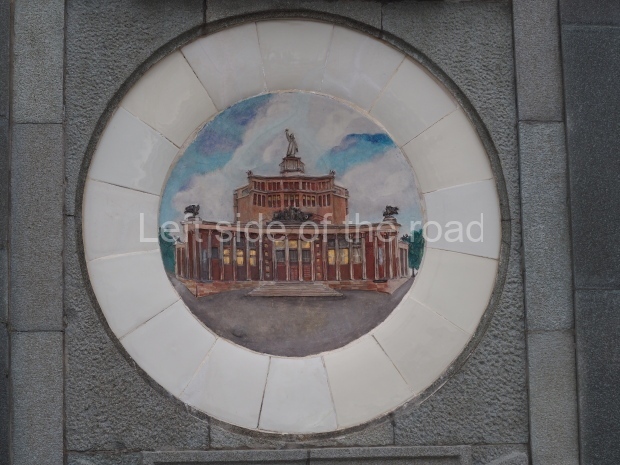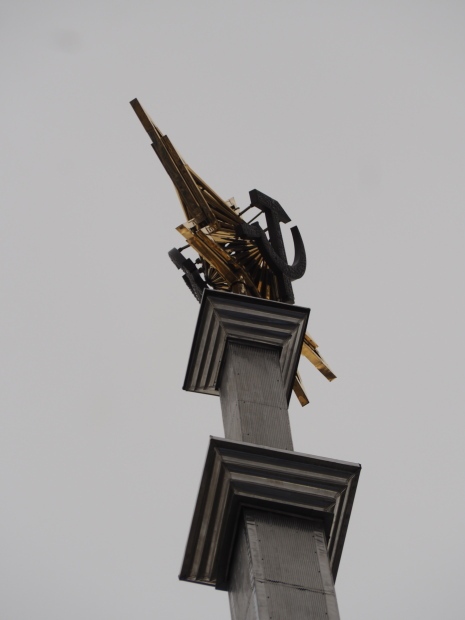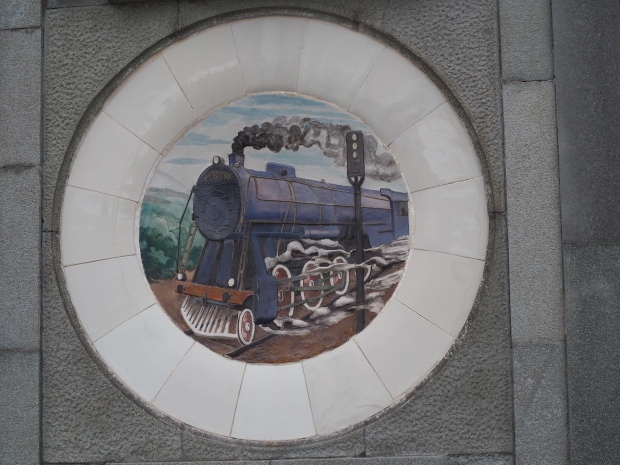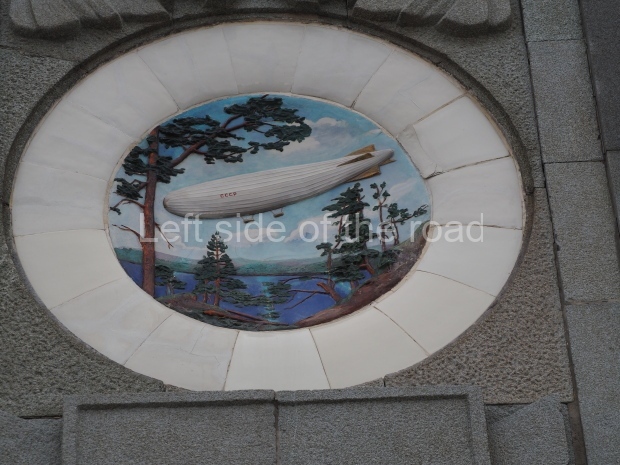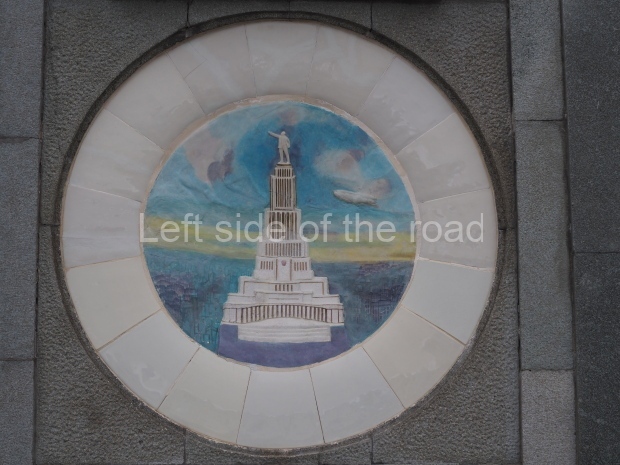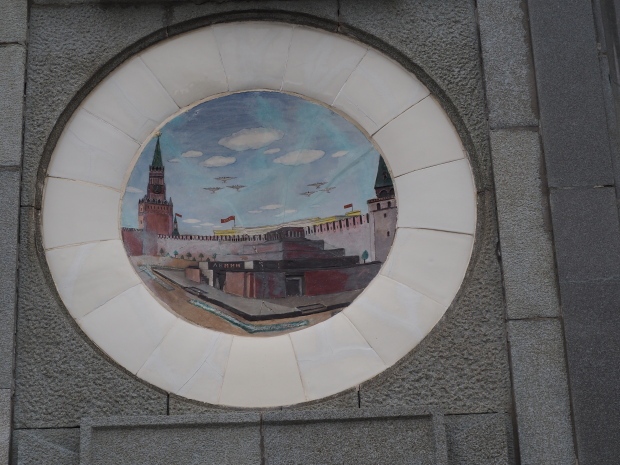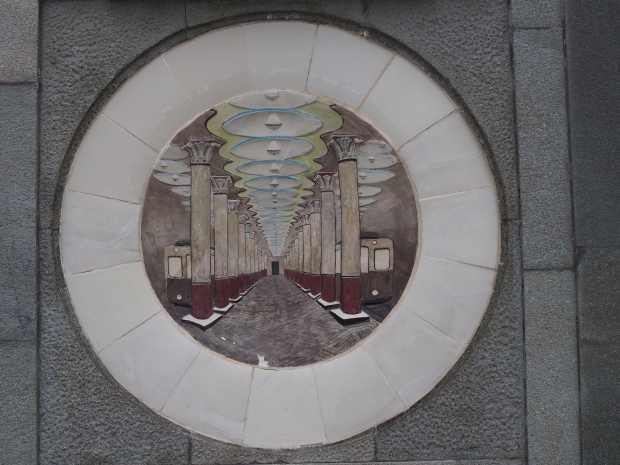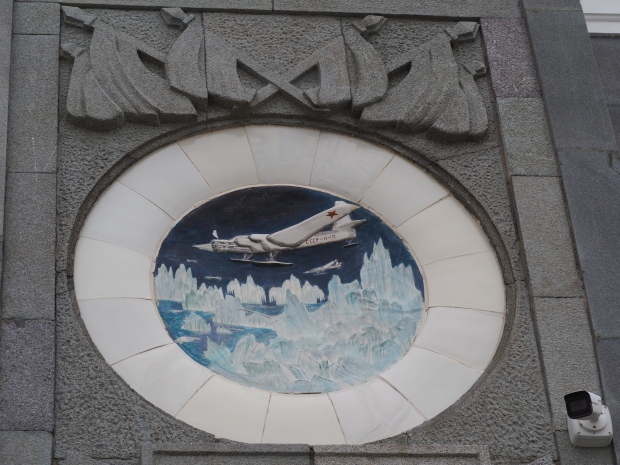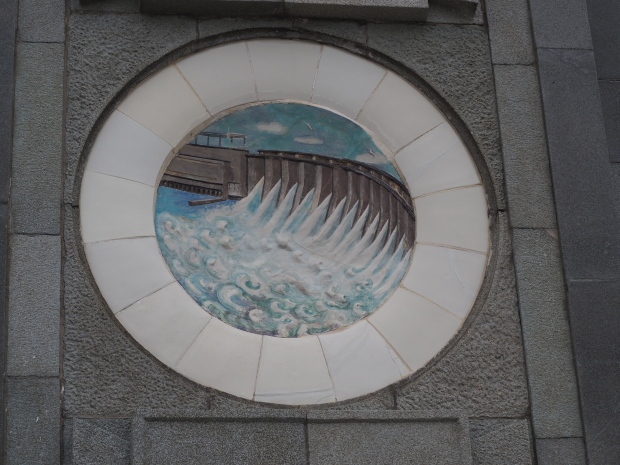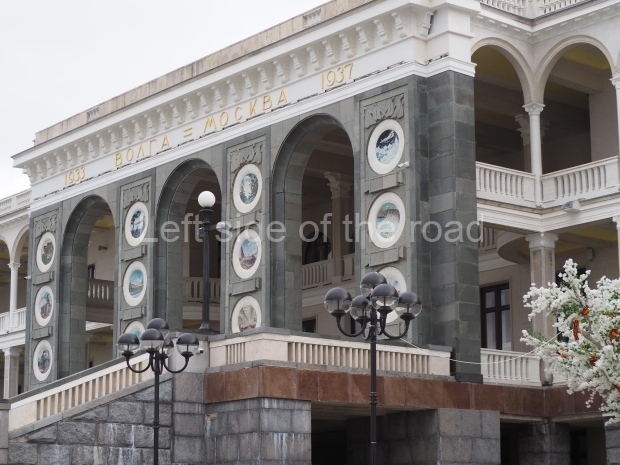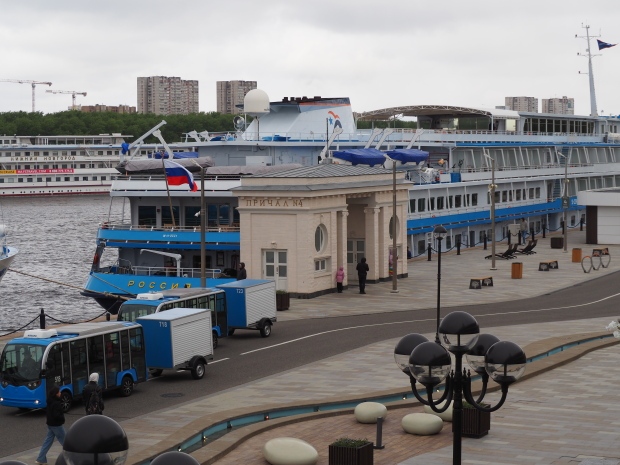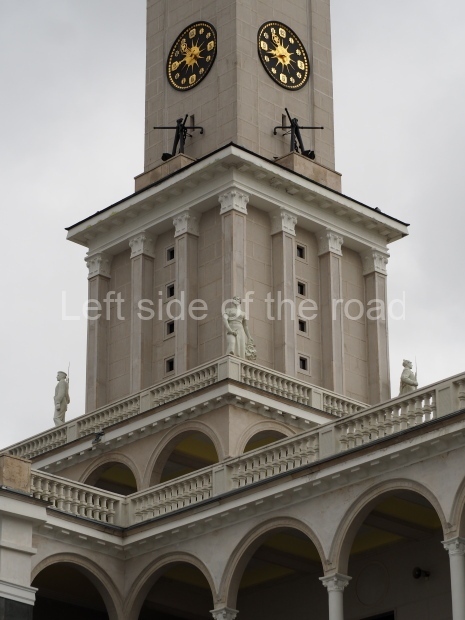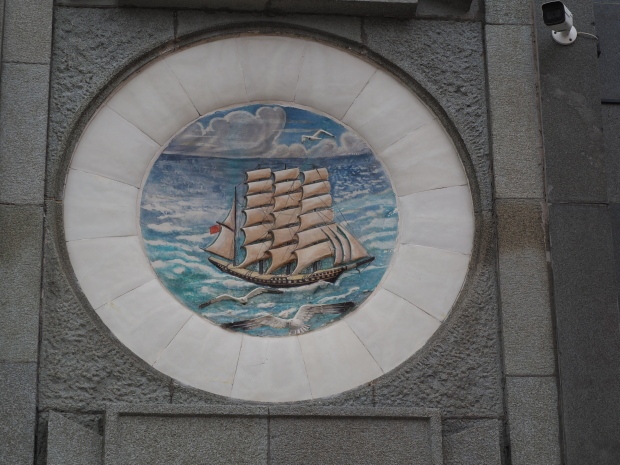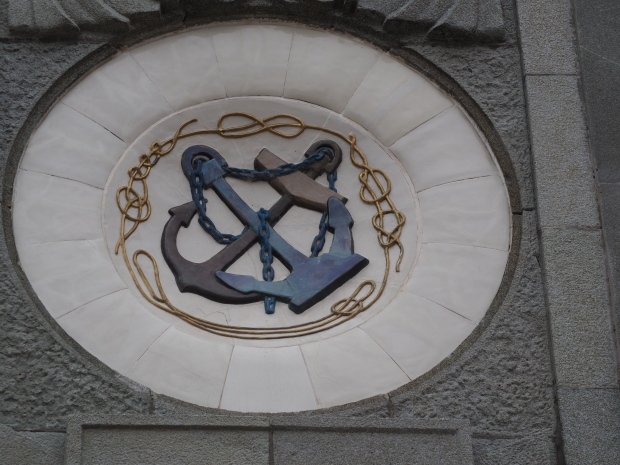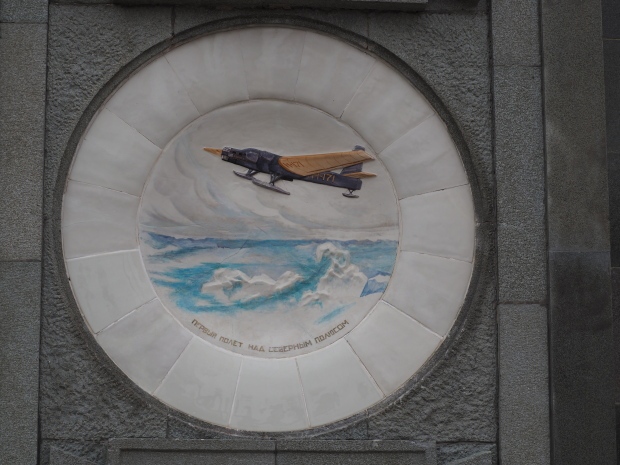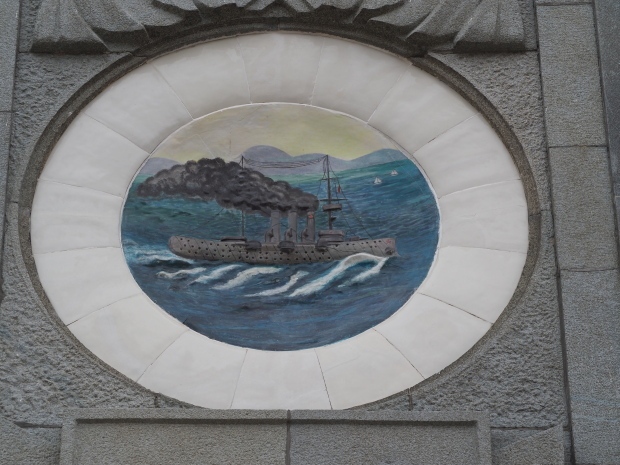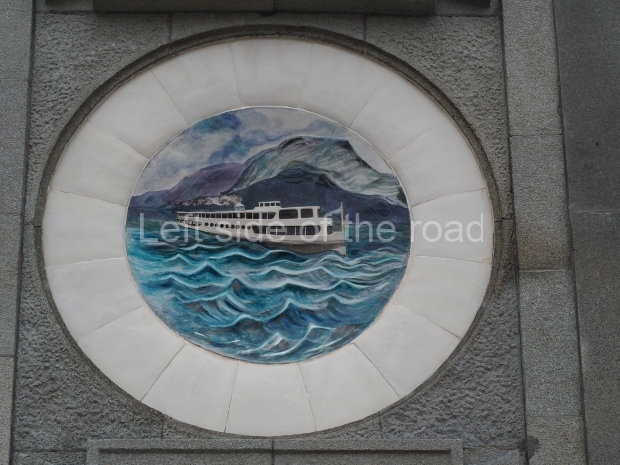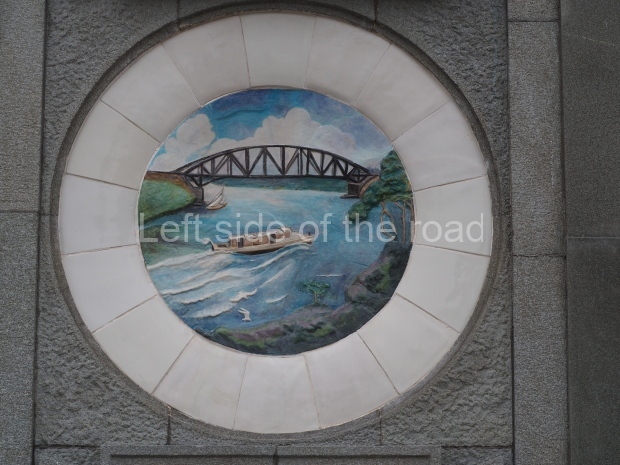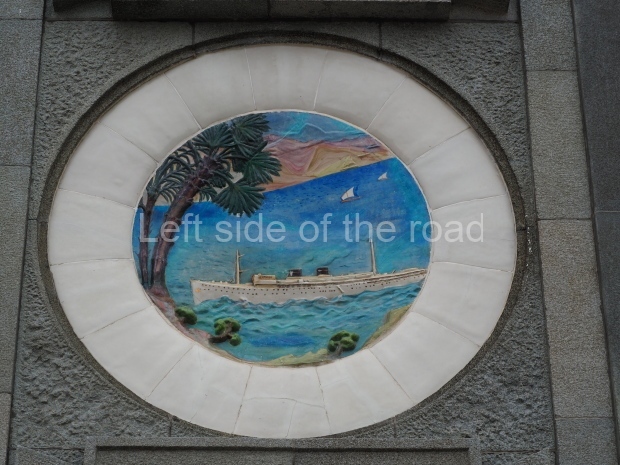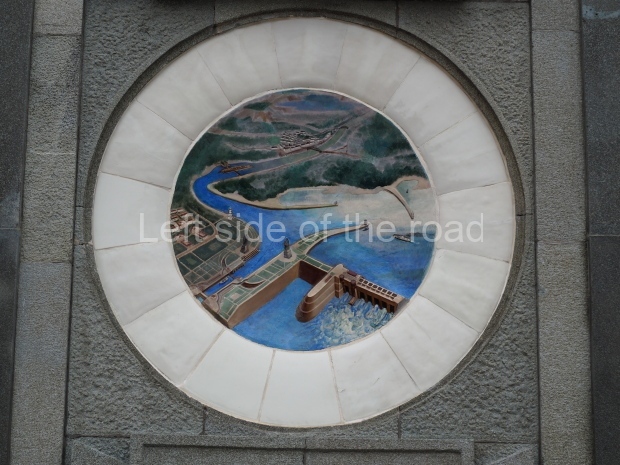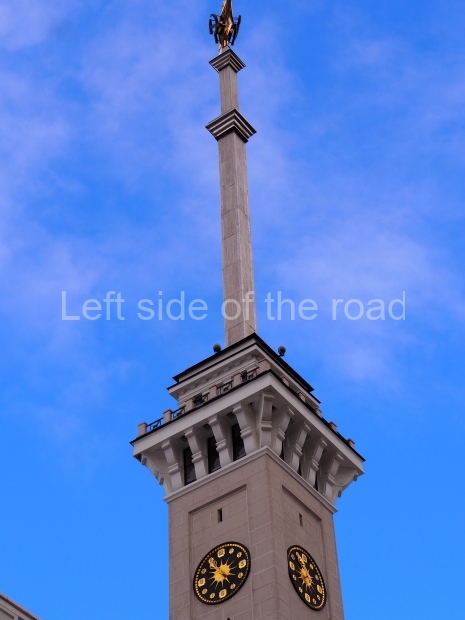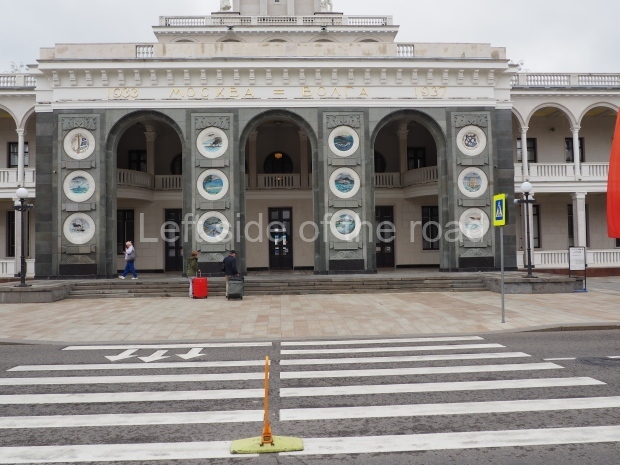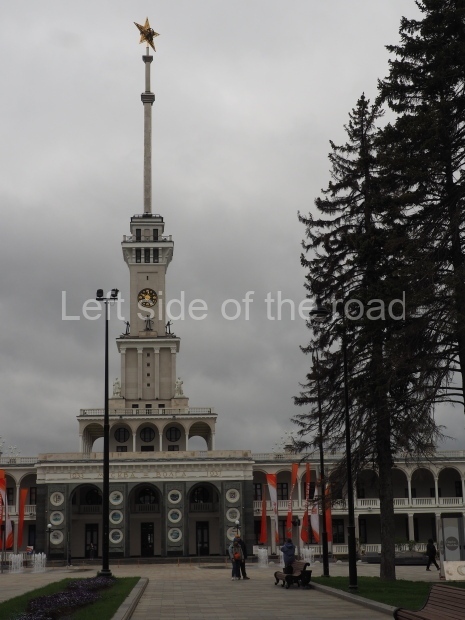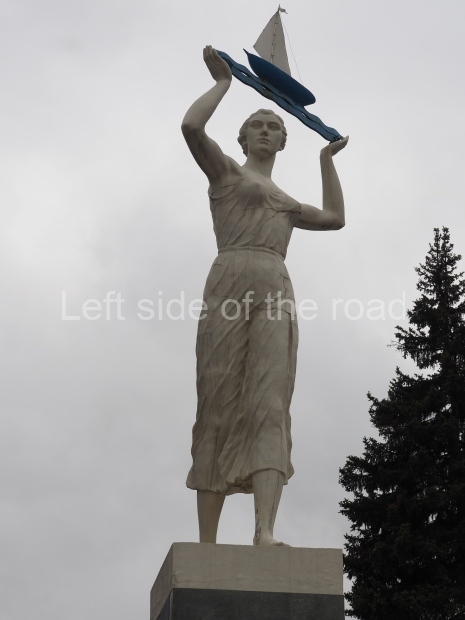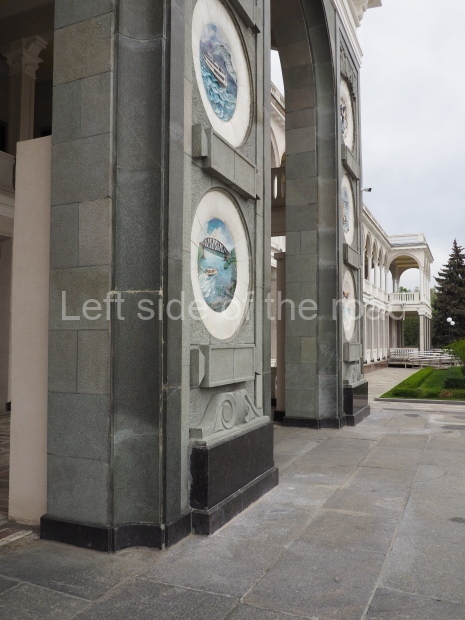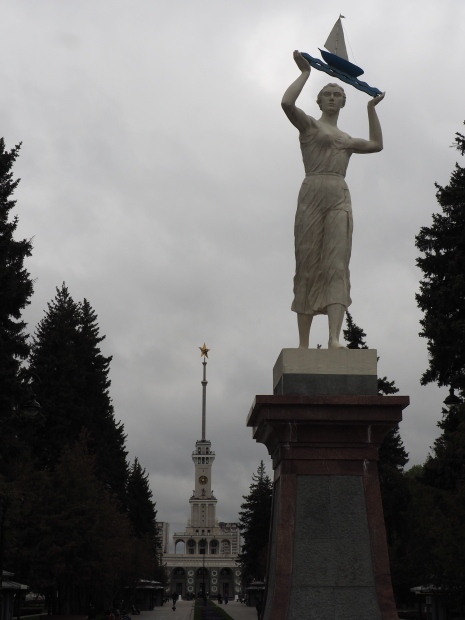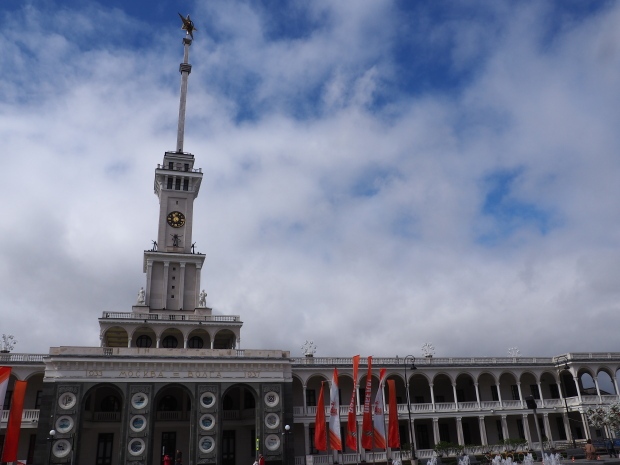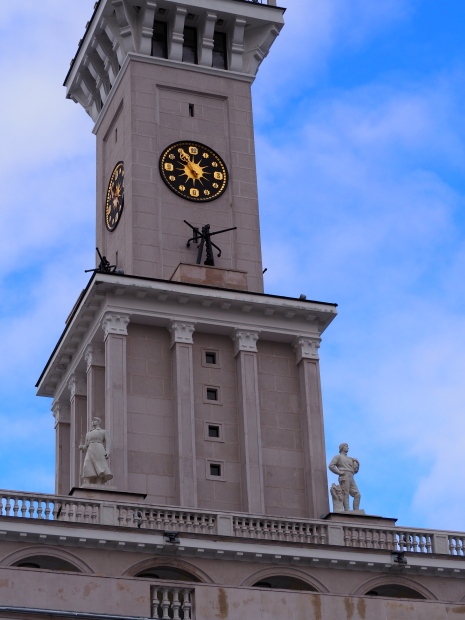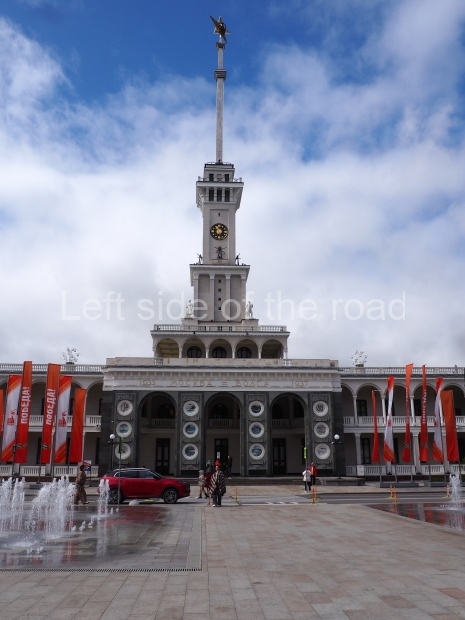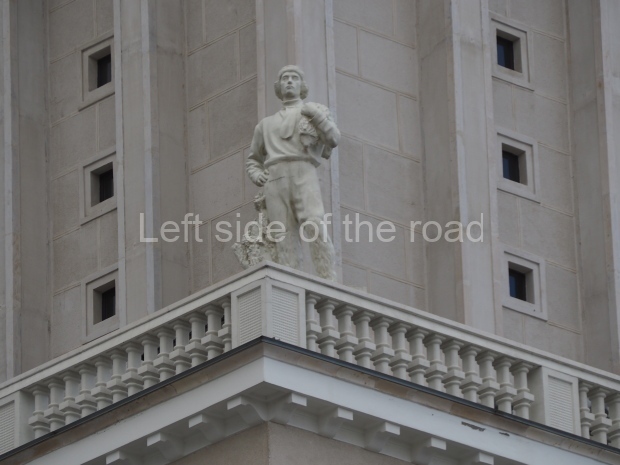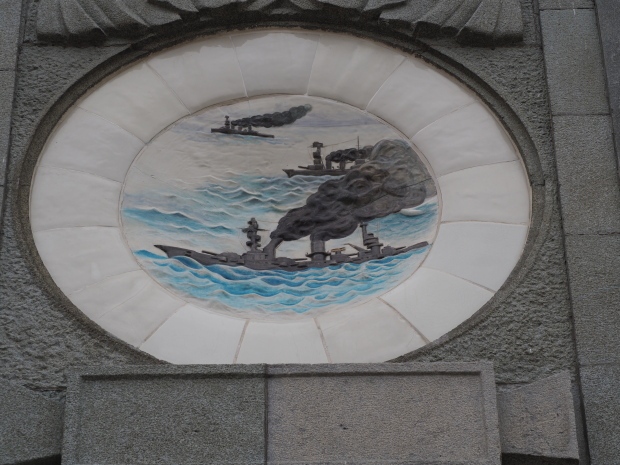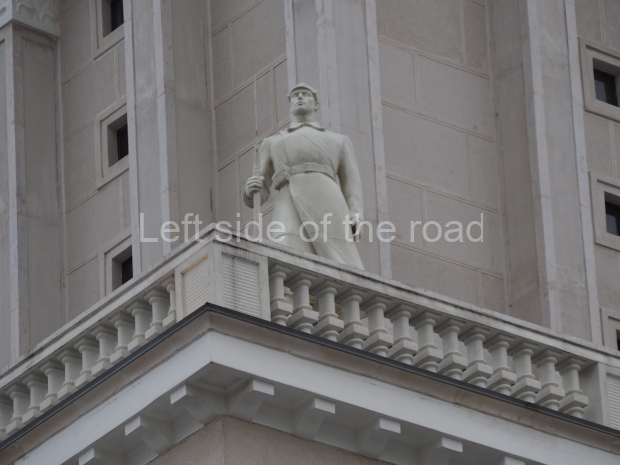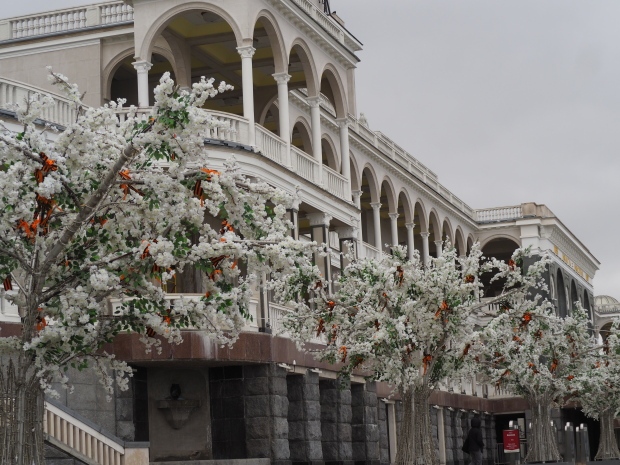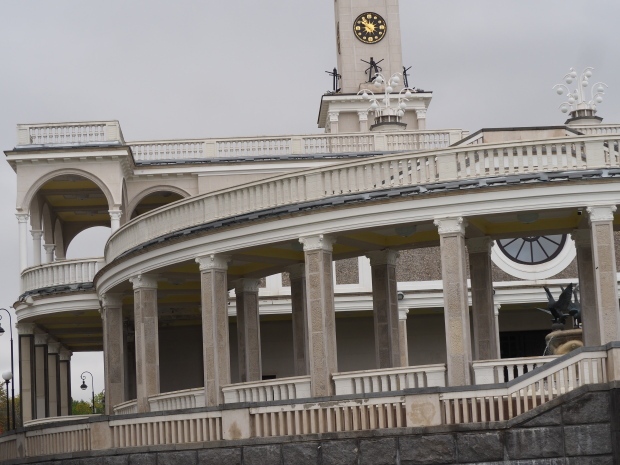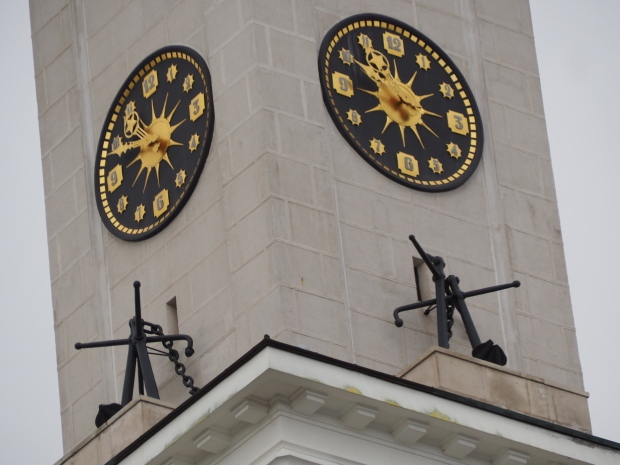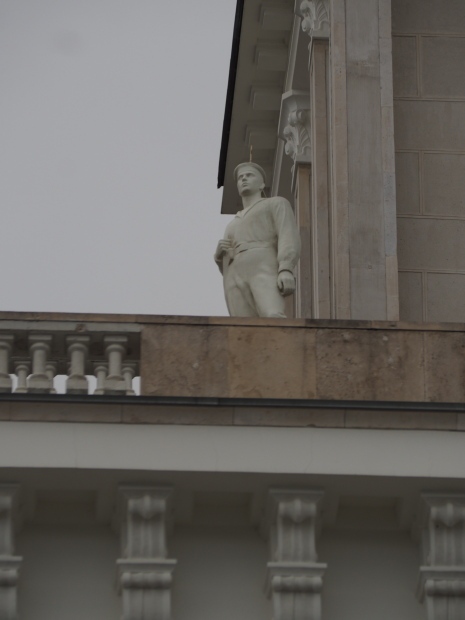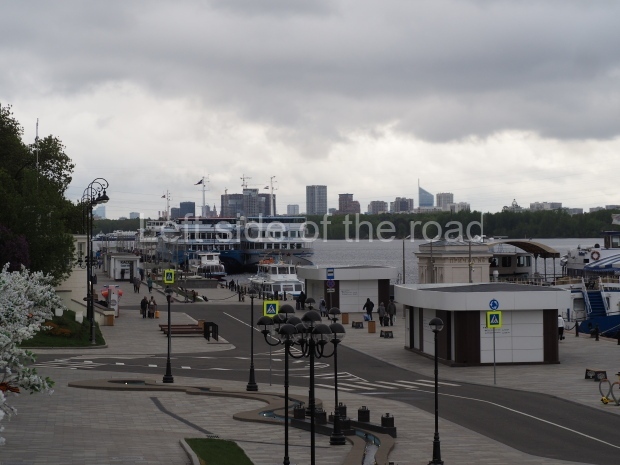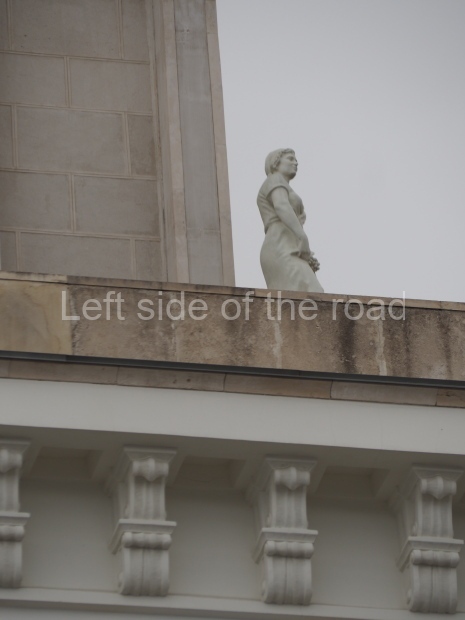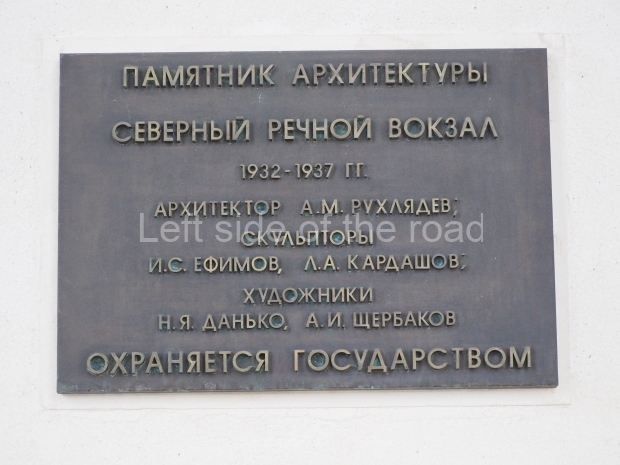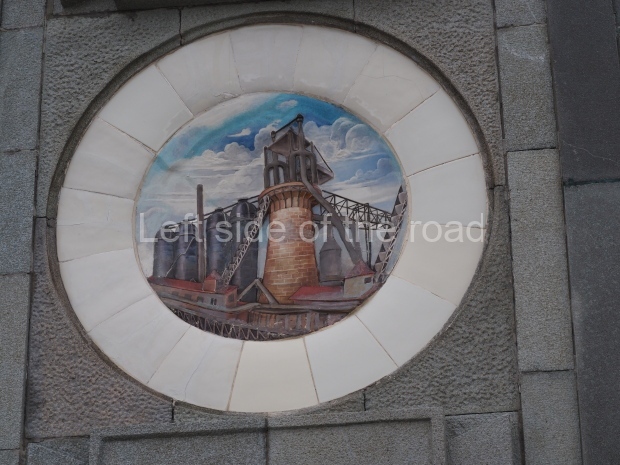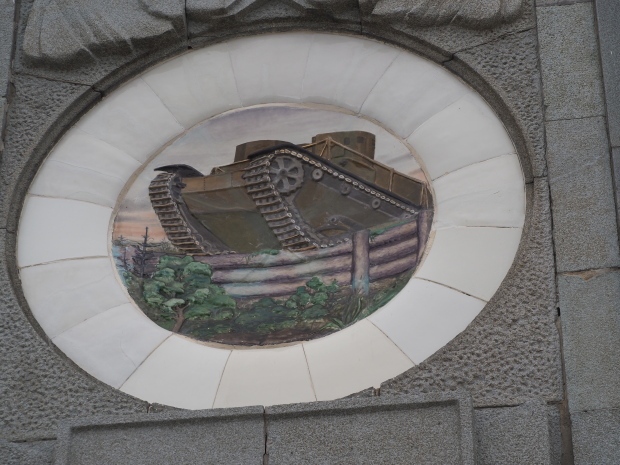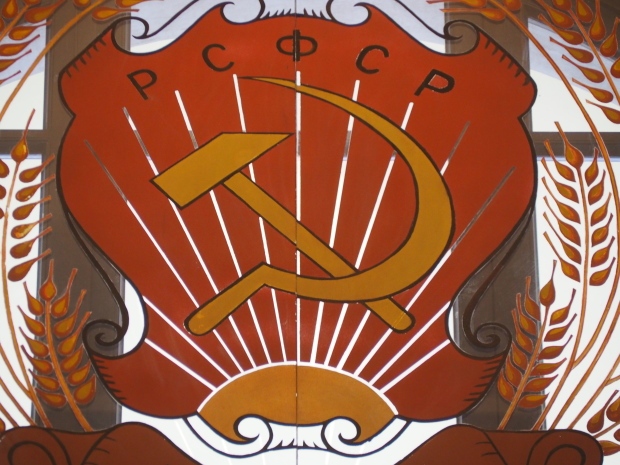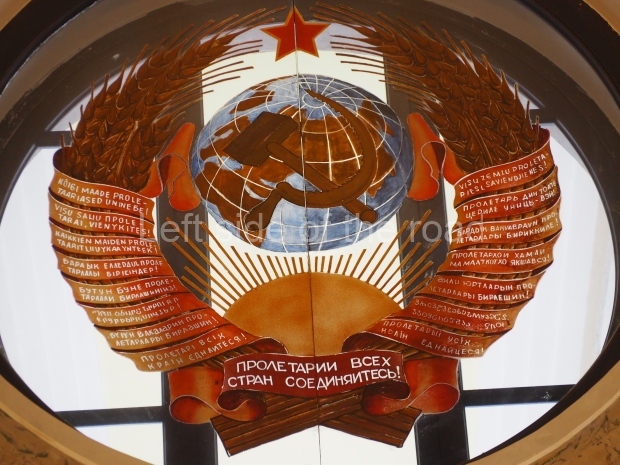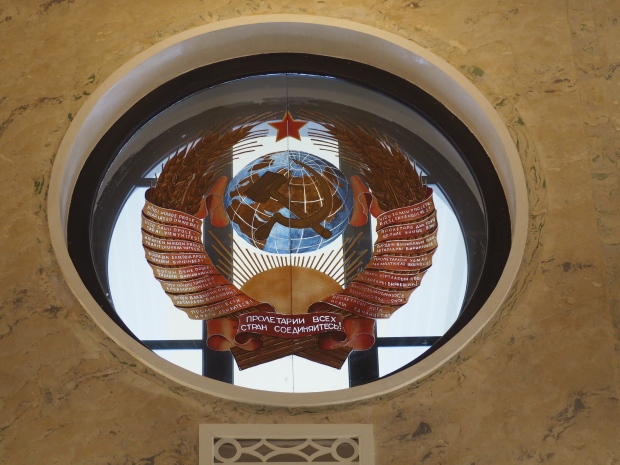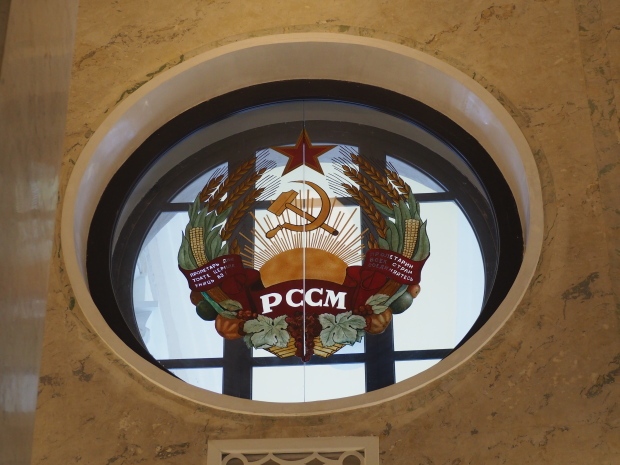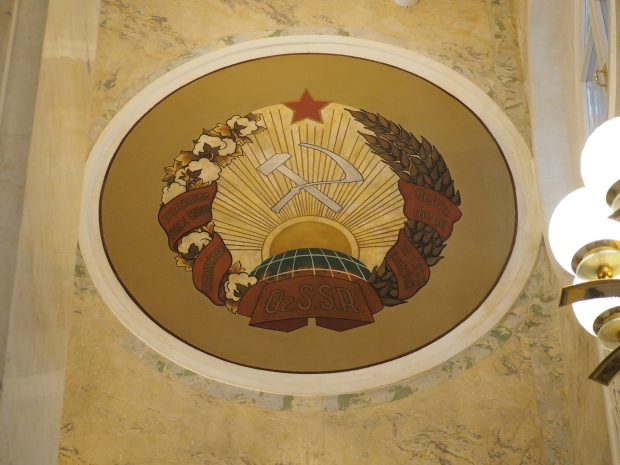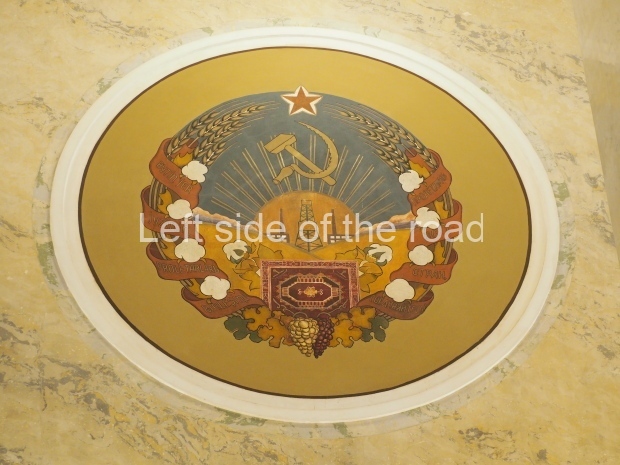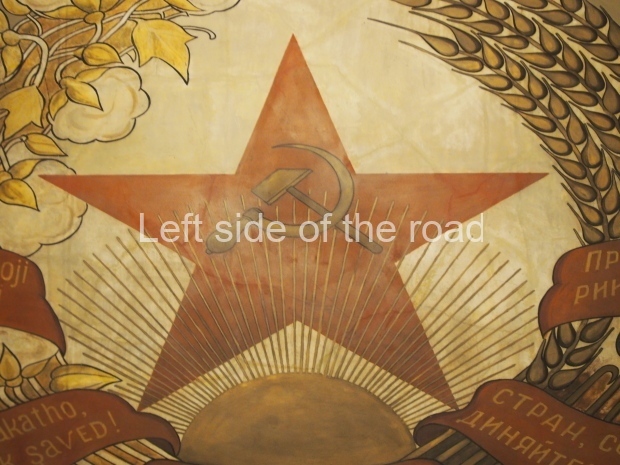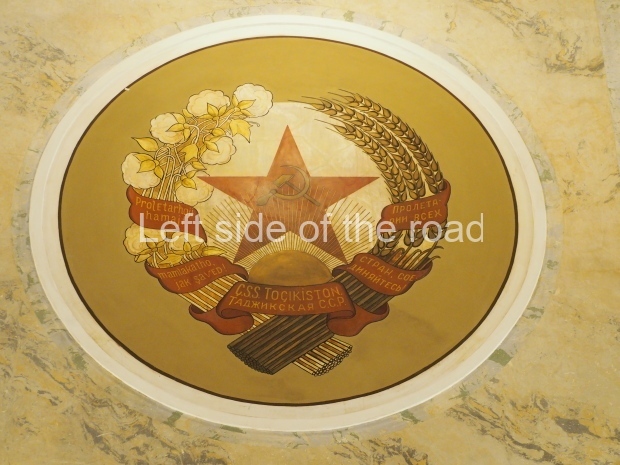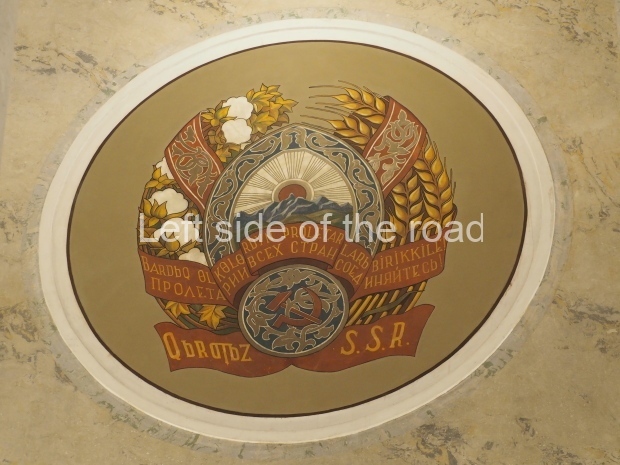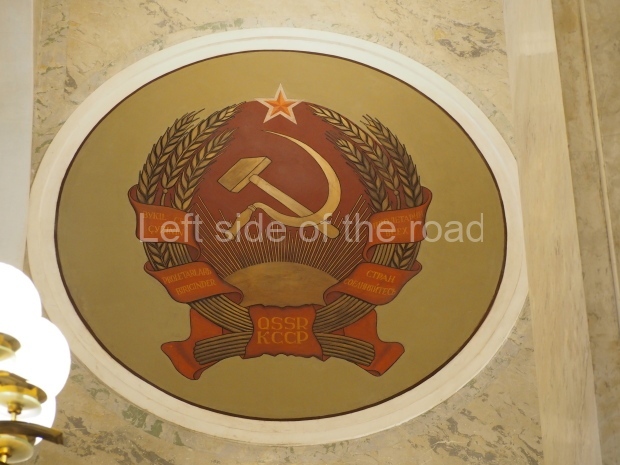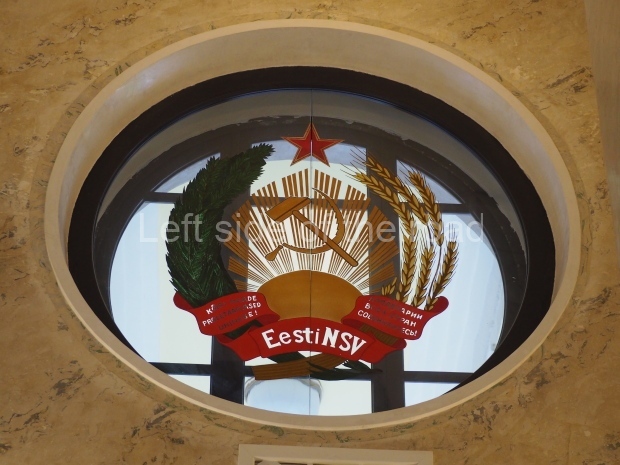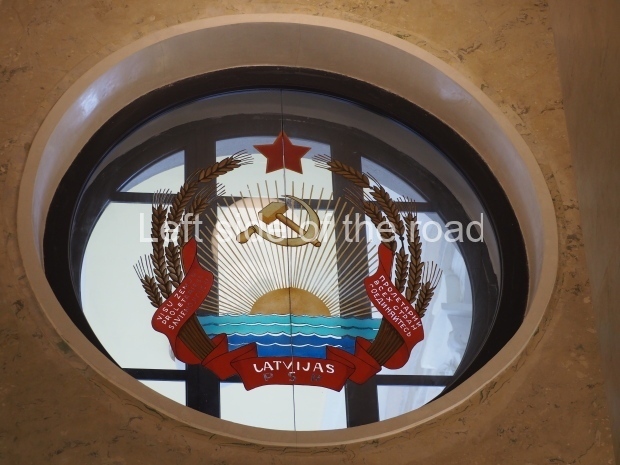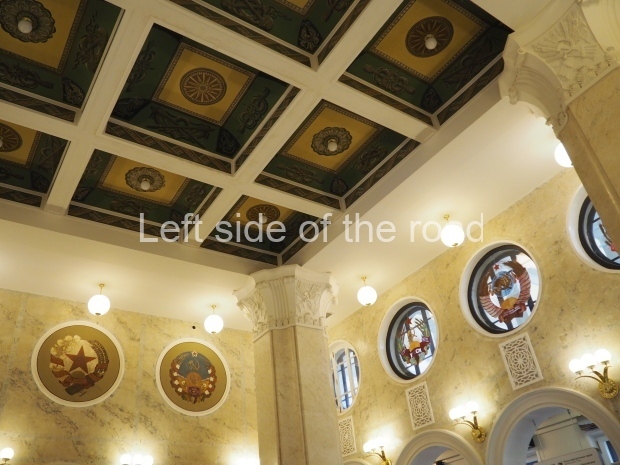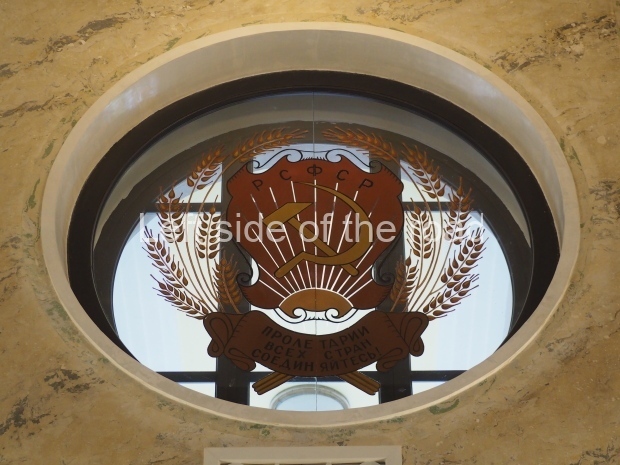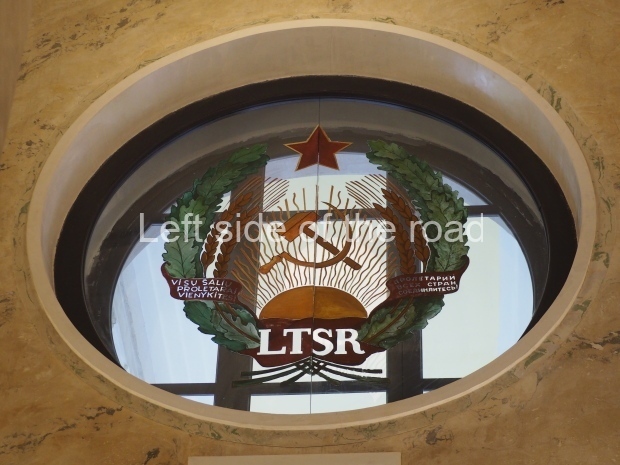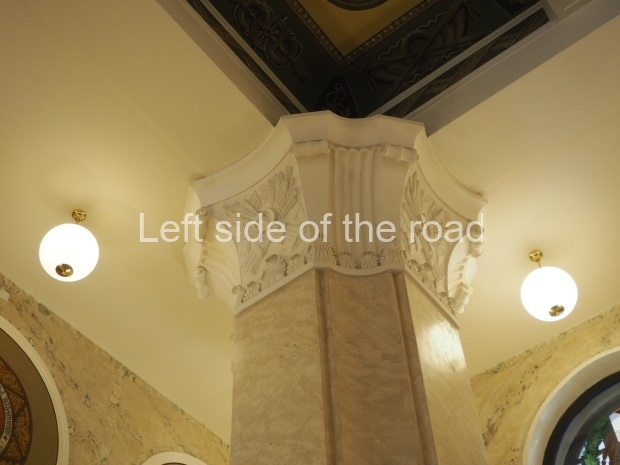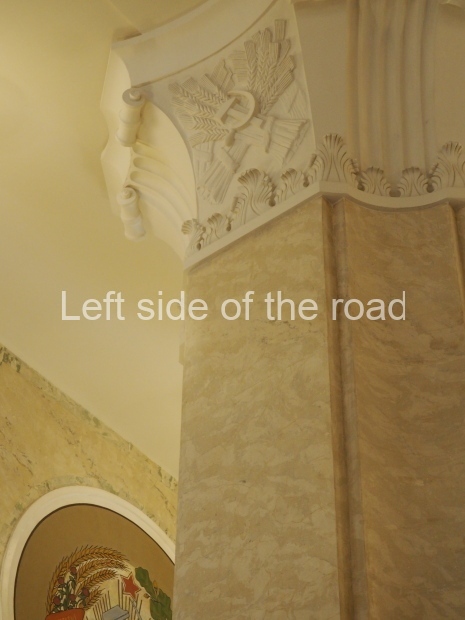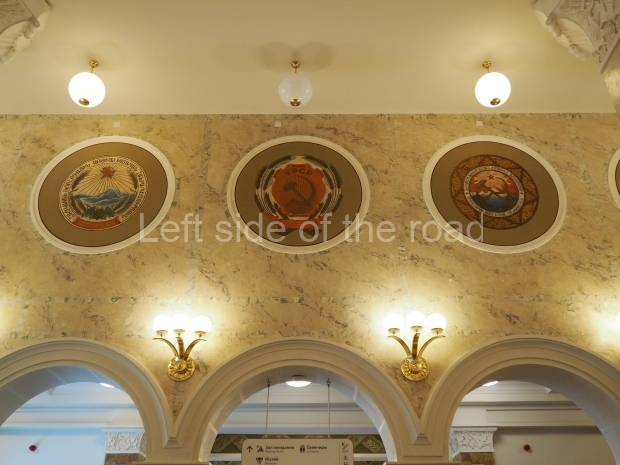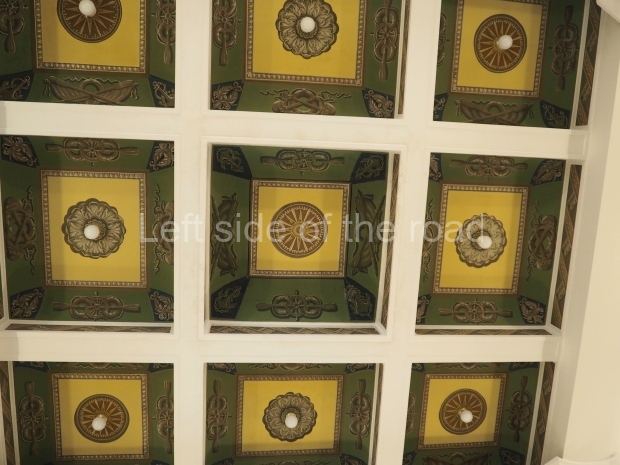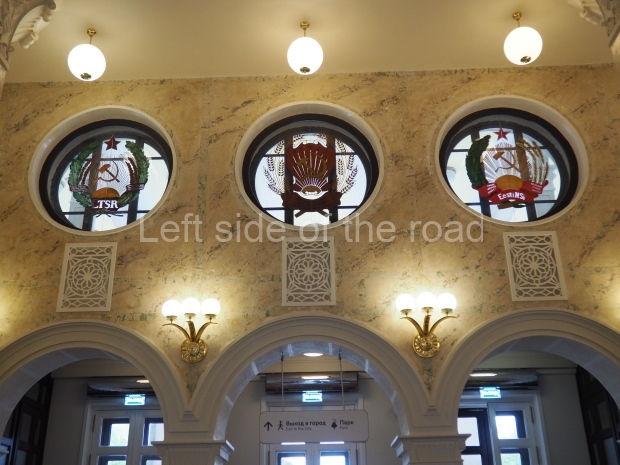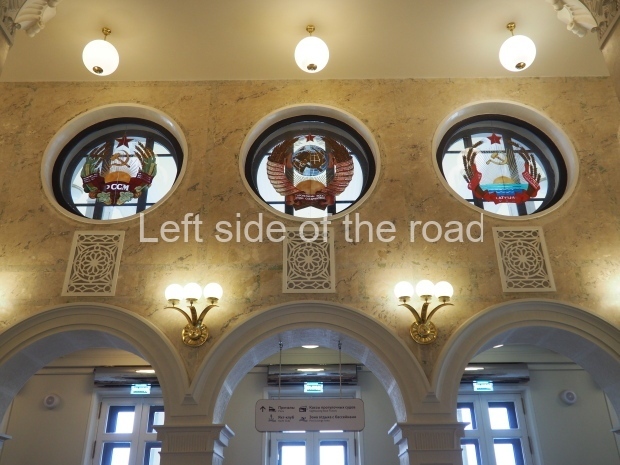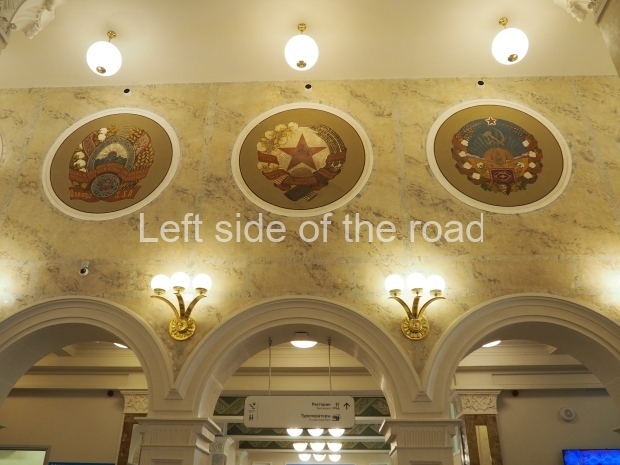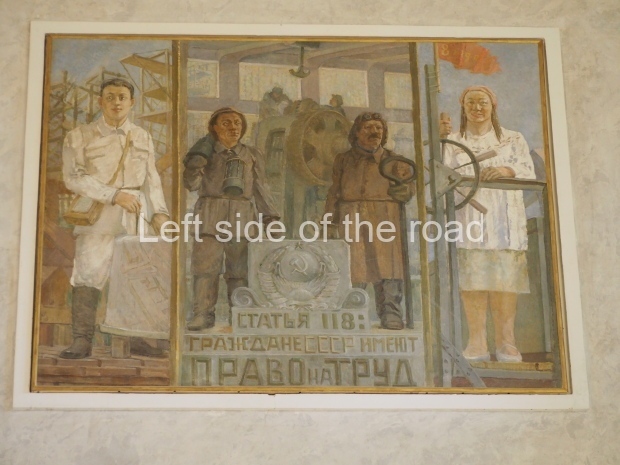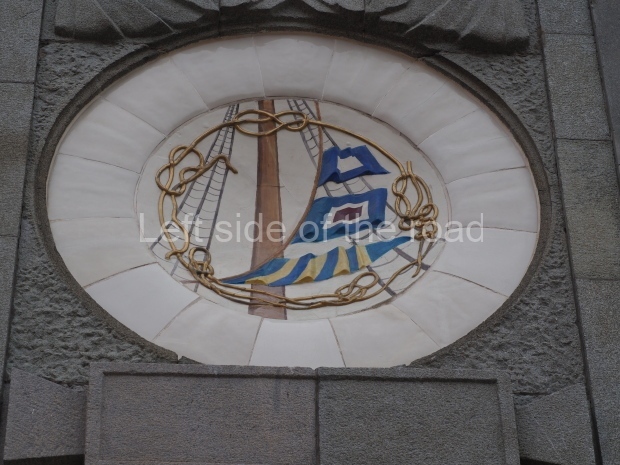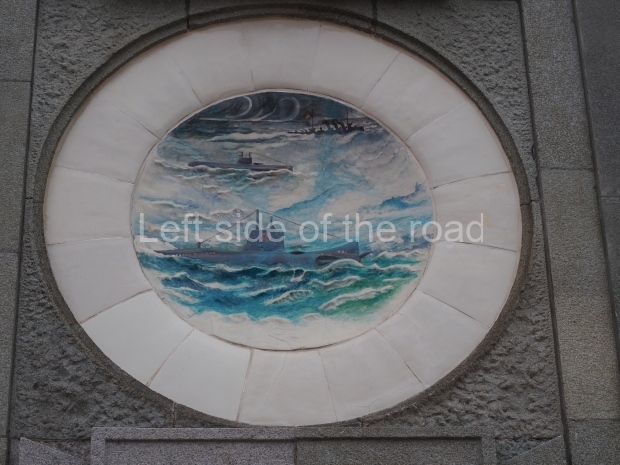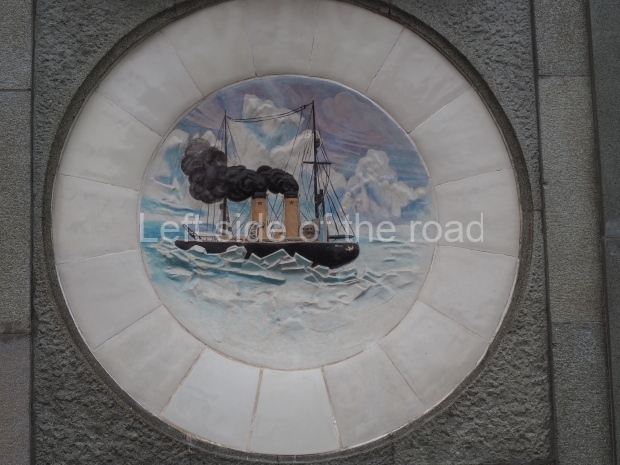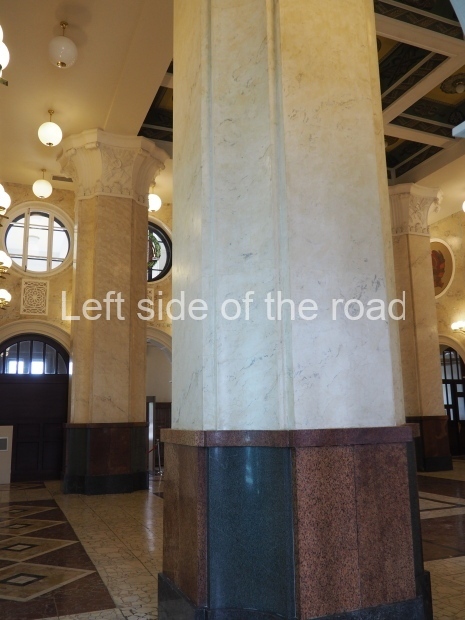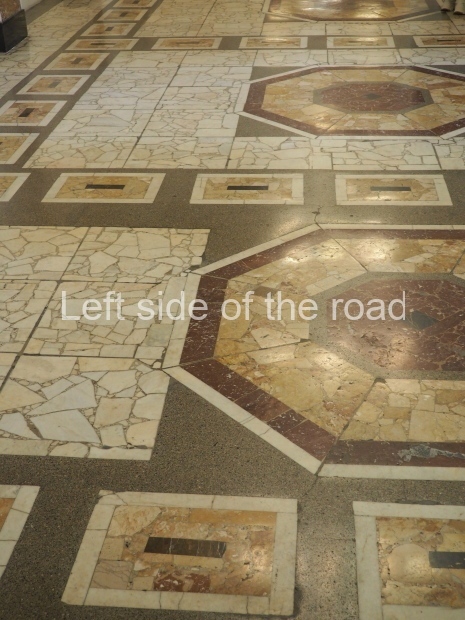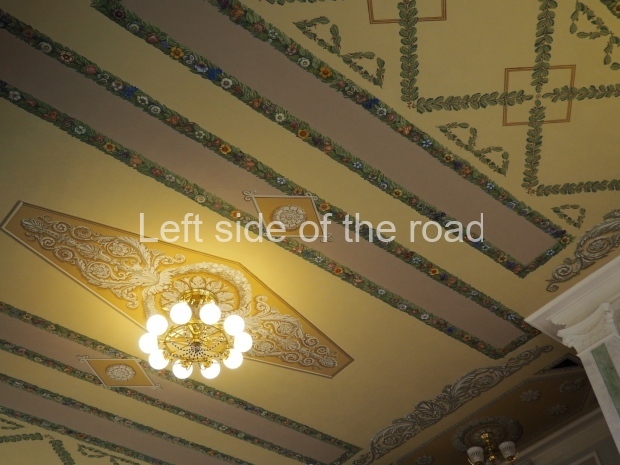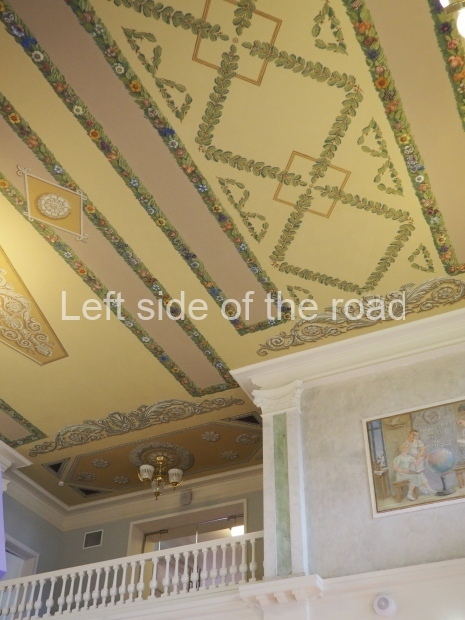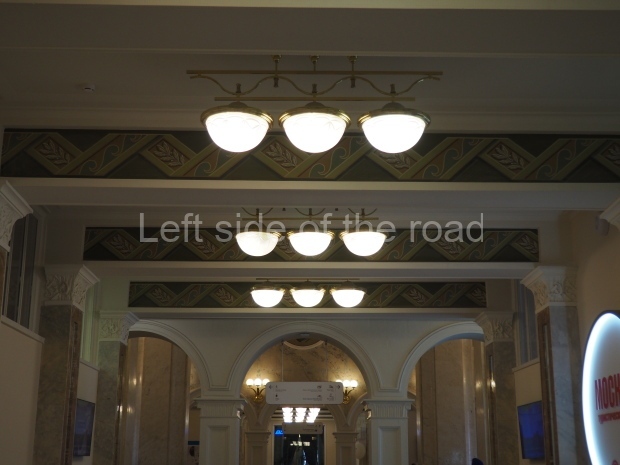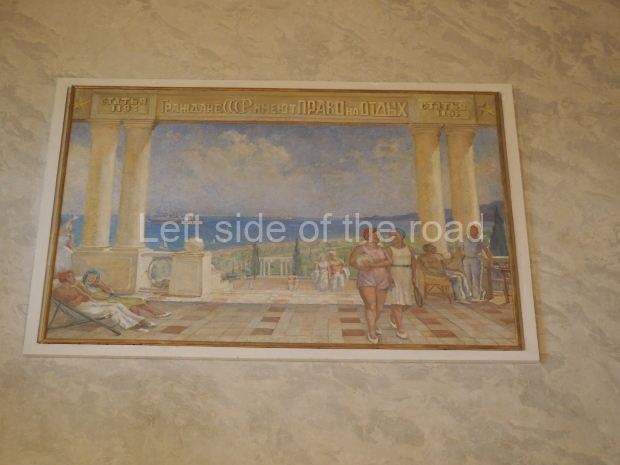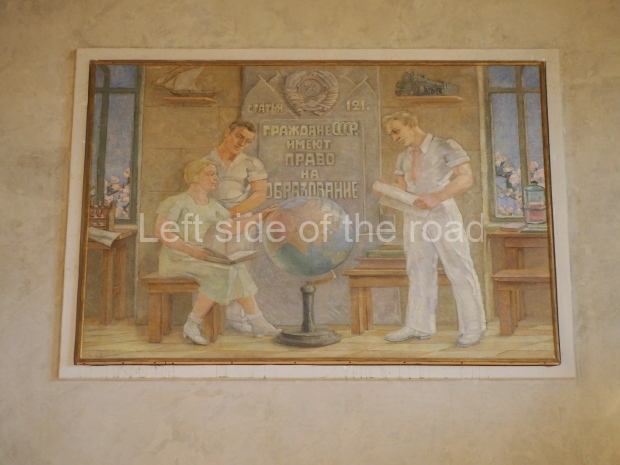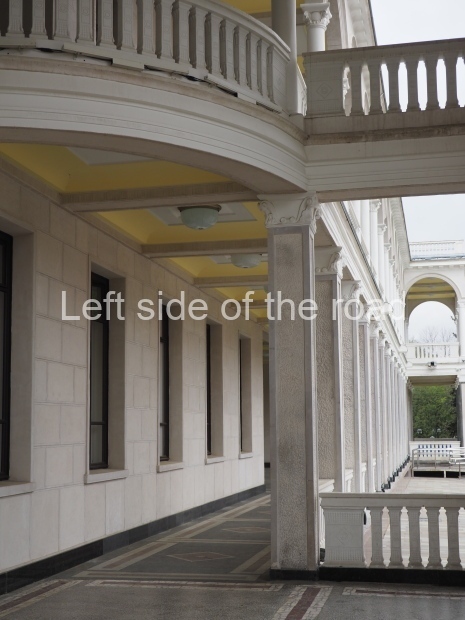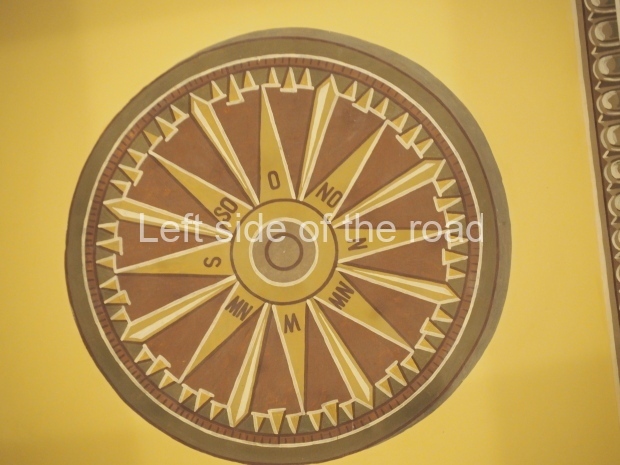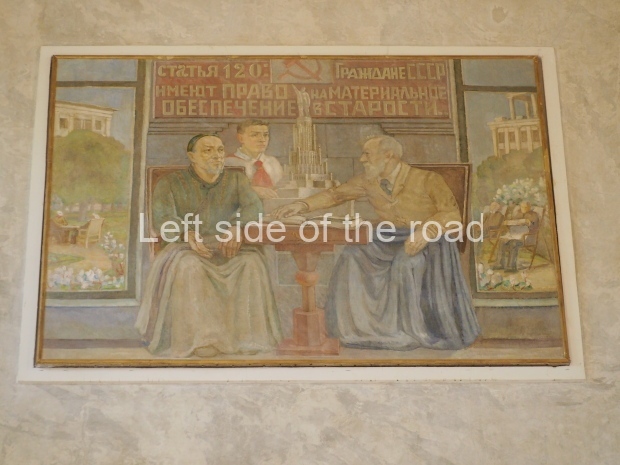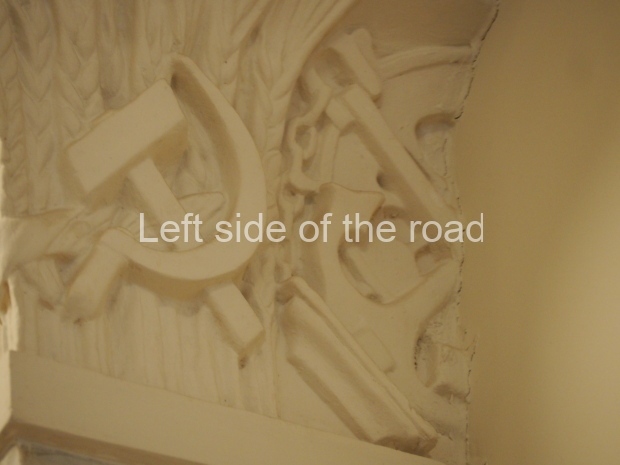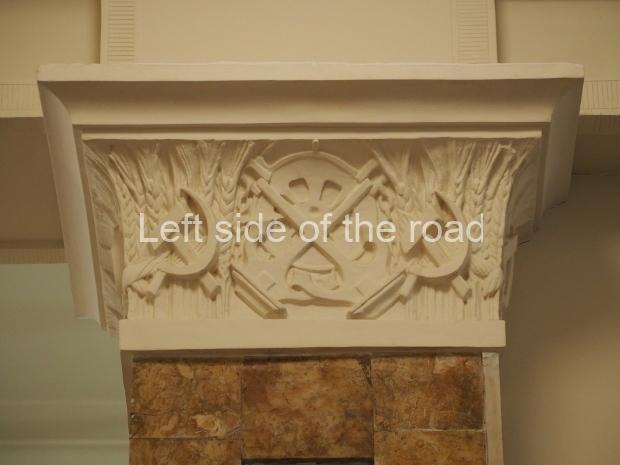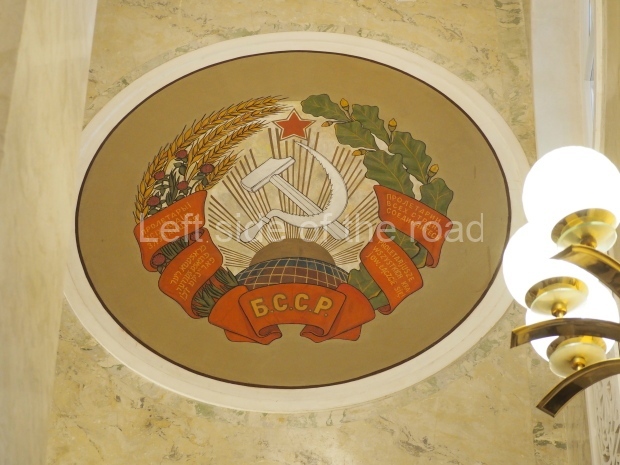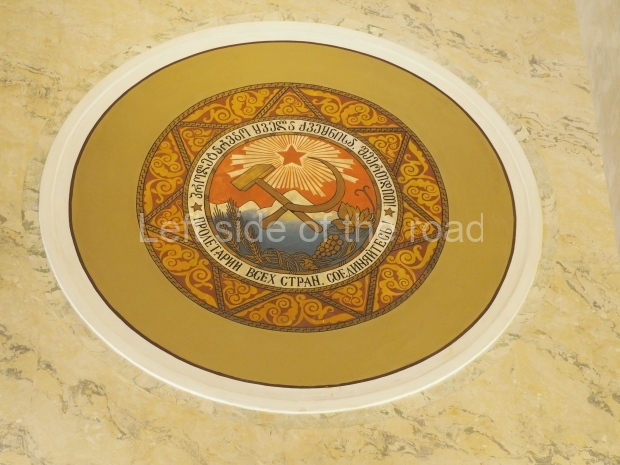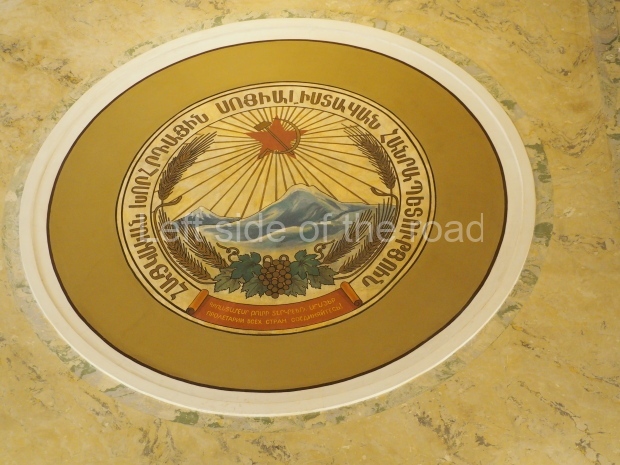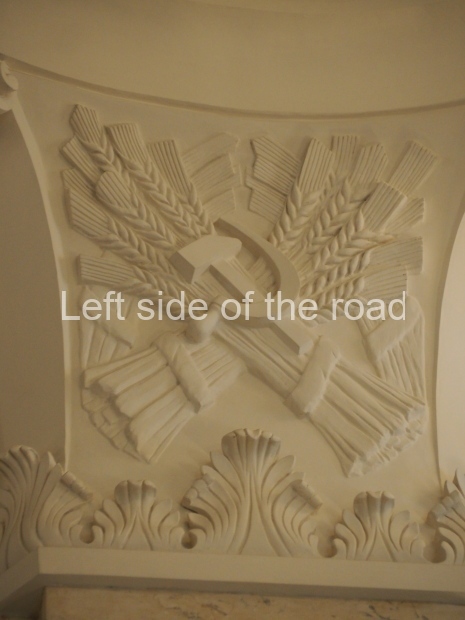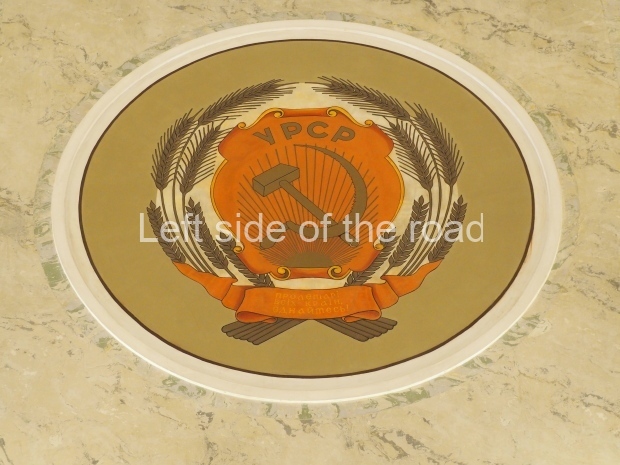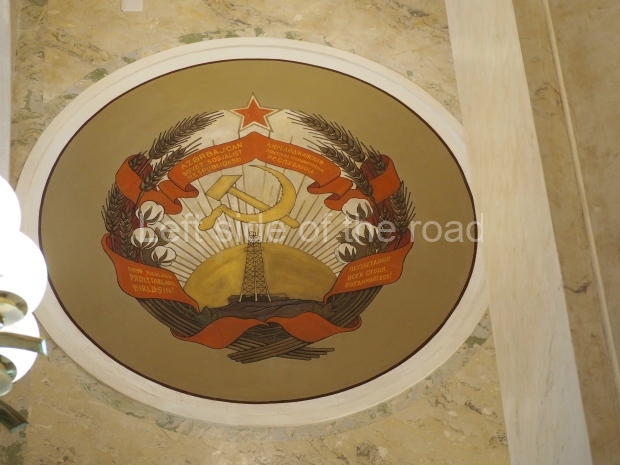The North River Terminal – Moscow
The North River Terminal in Moscow has reopened [in 2020] after two years of reconstruction. Dubbed ‘the river gates of Moscow’, it was the main gateway for travellers to the Caspian, Azov, White, Black and Baltic seas via the Volga and Don Rivers [and for this reason was also called the ‘Five Seas Port’]. It is also one of the first built in the Stalinist Empire style in 1937. [Other examples of this architectural style can be found on this page, specifically the ‘Seven Sisters’.] Architects Alexei Rukhlyadev and Vladimir Krinsky [don’t know where he comes into it as his name doesn’t appear on the official plaque on the wall at the riverside entrance – although he gets referenced on various architectural website] created a real Soviet masterpiece: from a distance, it looks like a huge ship, crowned with a 27-meter spire (together with it, the building reaches 75 meters in height).
After the fall of the USSR, the building and the park around it fell into disrepair, however, in 2018, authorities decided to revive it and in early September 2020, the River Terminal reopened after a two-year reconstruction. And it looks amazing!
The building has returned [to] its original look: the columns and halls have been restored, including mosaics with Soviet symbols.
Outside, the façade is decorated with historical medallions with various ideological themes, such as the country’s main constructions, Moscow metro trains, the development of the Arctic and big ships.
All of its 17 piers have also been repaired and now the Terminal will be able to receive up to 24 ships a day. Moscow officials said they expect 1.5 million tourists during the navigation season.
From here, you’ll be able to take a cruise to St. Petersburg, Yaroslavl, Kazan, Nizhny Novgorod, Astrakhan, Volgograd, Kostroma, Saratov and even Valaam.
….
On the roof, there’s now an observation desk with a panoramic view of the Khimki reservoir.
….
Soviet fountains and navy-themed sculptures were restored in the park around the Terminal.
Text above from Moscow’s Stalinist Empire-style North River Terminal opens after large-scale renovation
The medallions that flank the columns of the entrance on both sides of the terminal are created for the passenger either about to leave or arriving in Moscow. Those which passengers on their way to their ship for other parts of the country are faced with those sort of images they will encounter on their journey. So we have images of various types of ships they might encounter (remember the building was constructed in the late 1930s) as well as an image of the entrance of the Volga canal (complete with a statue of Comrade Stalin).
For those who are arriving in Moscow there are images of Red Square; the Lenin Mausoleum; the Red Army Theatre (although I haven’t been able to confirm if it ever had a statue on the top); the Mayakovsky Metro station; the never built Palace of the Soviets, which was planned to have a huge statue of VI Lenin standing on the top, as well as representations of industry and even war production.
Also to note are the three emblems of what used to be the Latvian, Estonian and Lithuanian Soviet Republics. They are depicted high up on the walls of the entrance hall but I doubt there are any departures to those locations at the moment – or for the foreseeable future. It must be said, however, that the Soviet emblems are much more attractive than the ones they presently use to represent their countries.
Architects;
Alexei Rukhlyadev
(possibly) Vladimir Krinsky
Sculptors;
IS Efimov
LA Kardashov
Artists;
N Ya Danko
AI Shcherbakov
Location;
51, Leningradskoye Highway
GPS;
55°51′03.93″ N
37°28′00.94″ E
How to get there;
The nearest Metro station is Rechnoy Vokzal (which means ‘River Station’) on the northern part of Line 2. The terminal is about a ten minute walk from the station.
